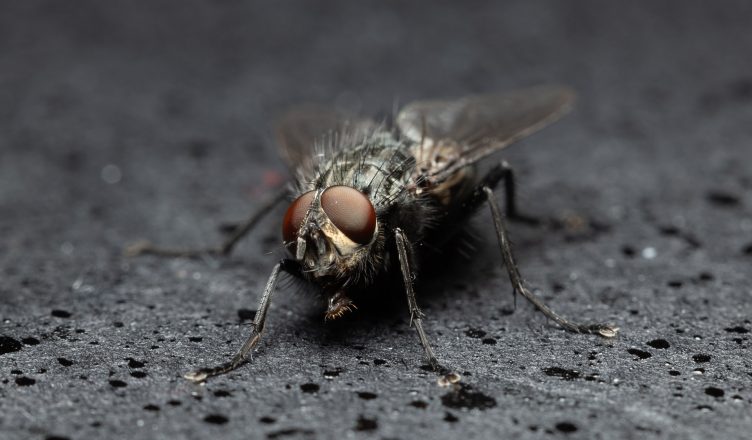Parasites have been around longer than any humans have. They exist almost everywhere, in the air we breathe, the water we drink, the food we eat, and the ground we walk on. To thrive, parasites have to find and form a relationship with their victims, also called hosts. These freeloaders then feed on, live on or even lay eggs in or on their victim, benefitting only themselves while simultaneously bringing pain and diseases to them. Below are 10 dangerous parasites that can infect humans.
10. Guinea worm

At first glance, the Guinea worm is a harmless-looking tiny worm, especially in its larvae form. It can be hardly seen with the naked eye since it’s only 1-2mm long. Although male adult worms continue to remain small at about 1 to 2 cm, adult female worms can grow to about the size of 1 meter (about 39 inches)! Out of all the Guinea worm species, only the species Dracunculus medinensis is known to infect humans.
The life cycle of the Guinea worm begins in the body of a water flea. When a person drinks the water containing the water fleas carrying these parasites, the hoppers are unknowingly ingested by them. The Guinea worm larvae then grow and mate in human skin, usually in the leg area, for up to a year. Abscesses are created wherever the worm grows.
About 300 days later, the fully matured adult female worm busts out of an abscess, and crawls out of the skin slowly, spanning over a couple of weeks. This condition is called Dracunculiasis. At this period, the unfortunate human is in agony due to the wound in his or her leg, and goes to a river or lake to attempt to cool off the burning pain. The female worm, seizing this chance, releases her clutch of about a few hundred thousand larvae into the water. The larvae are then eaten by the water flea, completing the lifecycle.
Symptoms of a Guinea worm infection includes puking, headache, dizziness, fluid retention and painful blisters in the legs when the mature female worm is getting ready to burst out. When the blisters are popped prematurely, it may trigger an allergic reaction. Blisters may also get infected by another source such as bacteria when they burst, causing even more infection and pain.
There is no cure or vaccine for the Guinea worm, and the victim can only wait for the worm to exit their body. Fortunately, Guinea worm infections are rarely fatal, and only happens on a small scale worldwide in third world countries due to global efforts to eliminate this parasite.
To keep yourself safe from the Guinea worm, it is best to avoid drinking water directly from ponds and lakes without boiling, especially in countries where sanitation is not optimal.
9. Cryptosporidium

Cryptosporidium is a tiny single-cell parasite that infects both humans and animals. They are known to wait for a new host in water where it attacks the victim’s small intestine when ingested. This parasite is very common in developed countries. Cryptosporidium hominis is the strain that attacks human exclusively.
The life cycle of this parasite begins in excretion of an infected human. When they are excreted in the poop of infected person into water, Cryptosporidium switches off and lies dormant in wait until it is drank by a new host. Once that happens, Cryptosporidium is switched on into active status, and multiply rapidly in the victim’s guts. When the victim takes a dump, Cryptosporidium is released into water, and the life cycle is complete.
Cryptosporidiosis is the disease caused by Cryptosporidium. Patients usually suffer from watery stools, fever, puking and stomachaches. These symptoms usually last for a couple of weeks, and usually goes away by itself without medication. However, for children and people with weakened immune system due to conditions like AIDS, symptoms may turn deadly as their bodies may not be strong enough to fight off the parasite. This parasite can cause dehydration and eventually death if left untreated.
To avoid getting this parasite, practice washing hands before eating and do not swallow water from public parks and lakes.
8. Scabies mite
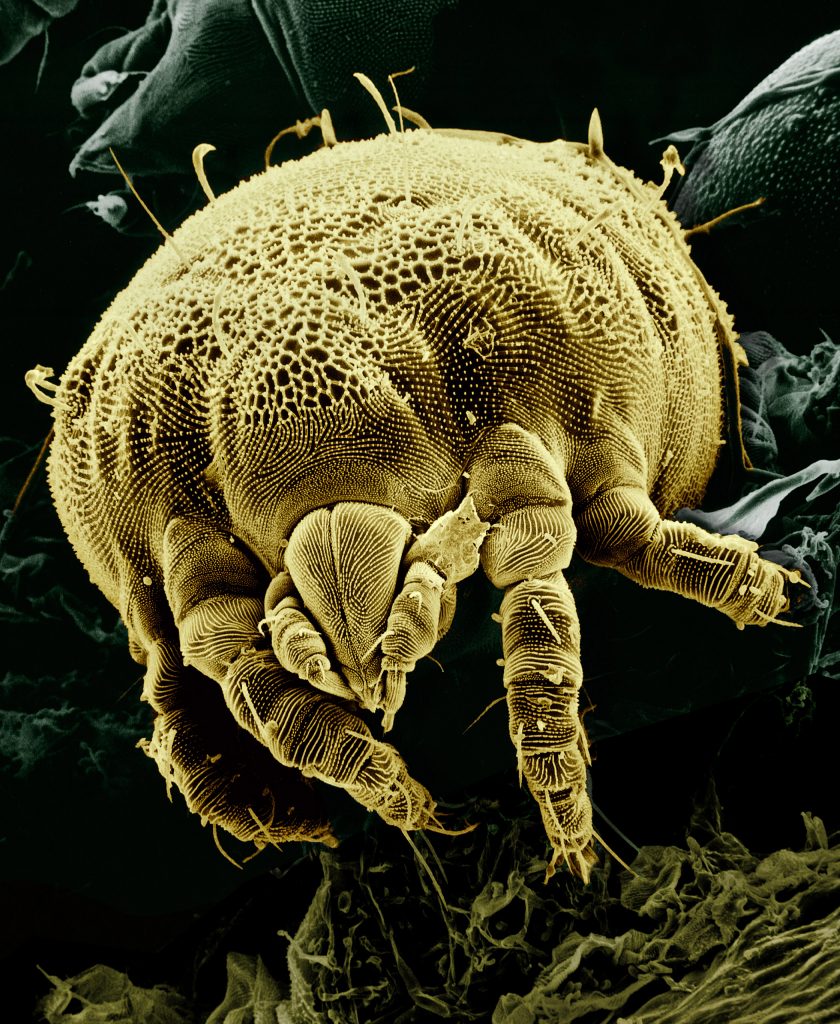
The itch mite, or Sarcoptes scabiei, is a parasite that digs into their victims’ skin to feed and reproduce. This mite attacks many different species of animals apart from humans, including cows, dogs and even hippopotamus. They are unable to survive for more than 3 days off the skin of a host.
To begin its lift cycle, mature female mites first dig into the skin of her host to lay eggs. The eggs then hatch into larvae, feeding and growing. When the larvae molts, it triggers an allergic reaction, causing Scabies, or informally known as the seven year itch. When the host’s skin comes into contact with another potential host, such as another human, some of the parasite hop onto the skin of the new host, effectively infecting another person with the disease.
Scabies causes extremely itch skin rashes, causing victims to damage their own skin as they scratch at it, trying to ease the itchiness. Infections may also occur due to broken skin with bacteria entering the wounds.
Avoid touching another infected person to prevent getting infected with scabies.
7. Pinworm (aka threadworms)
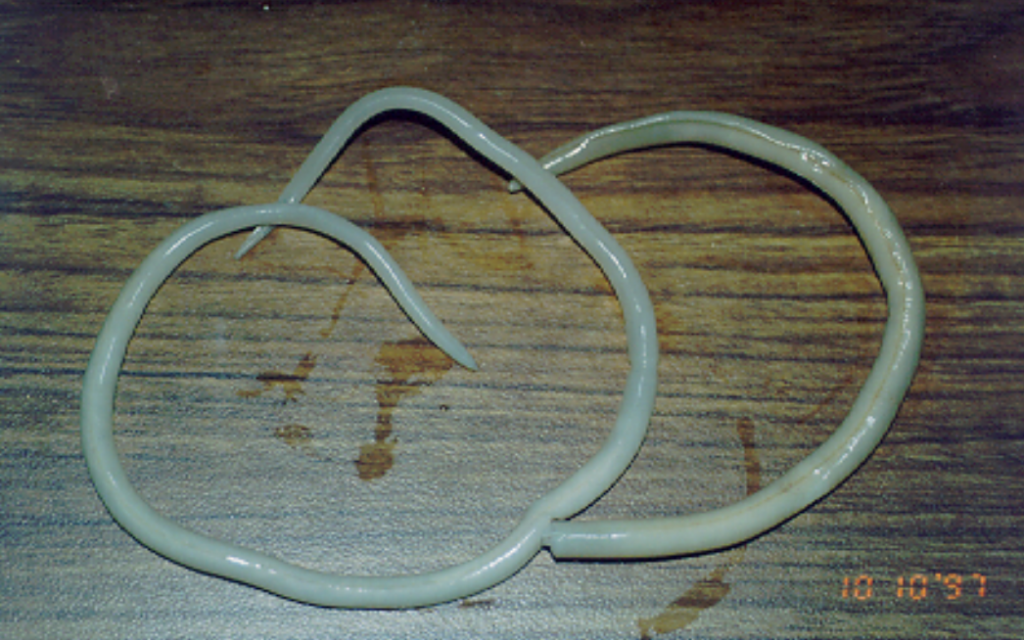
Pinworms, or threadworms, are tiny white worms about 1cm in length. The pinworm species Enterobius vermicularis only attacks humans, but there are other species of pinworms which invade the bodies of other animals such as monkeys. Strongyloides stercoralis, another species of pinworms, are also commonly found living in human gut.
Pinworm eggs usually lie dormant in the soil, until eaten by an unknowing host. Once in the human digestive system, the larvae hatches from the egg and grow to adulthood. The female pinworm migrate to the anus at night to lay her eggs. After laying her eggs, the female pinworm dies. Eggs can be reingested by the infected human when he or she scratches the itch area and touches their face, or passed on to a new host when an uninfected person touches items which are contaminated with the eggs.
Infection by pinworms is known as Enterobiasis. Although not deadly, sufferers of the disease experience intense itchness of their anus, leading to skin wounds from scratching. Since eggs can also easily stick to clothes, furniture and even be airborne, it is almost impossible to guard against infection once someone else living under the same roof contracts the worm.
6. Roundworm
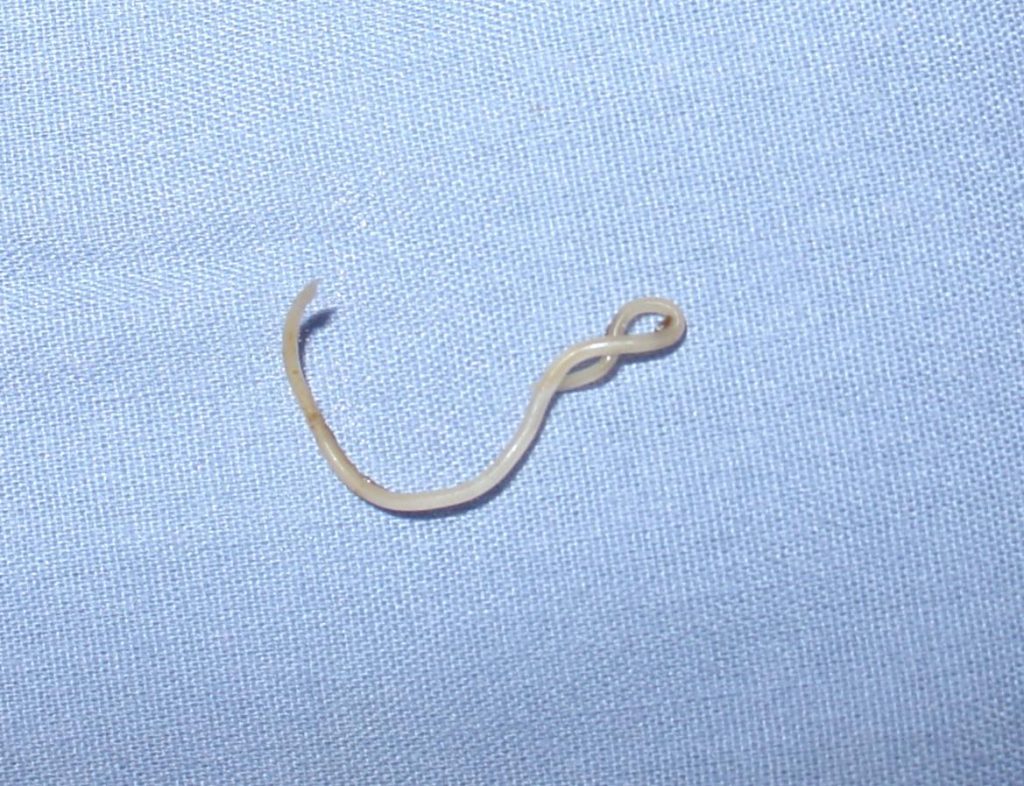
Roundworms are earthworm-like, non-segmented creatures that infect animals and humans. Like the pinworm, roundworms infect humans through ingestion of its eggs from the soil or water. Roundworm can grow up to 35cm (about a foot long), and their eggs can live in the soil for at least 10 years
The lifecycle of the roundworm begins in the human body. An infected human releases millions of eggs in their defecation. A new host comes along and ingest the eggs, and eggs in the small intestines hatch into larvae which burrow through intestine walls, getting into the bloodstream. The larvae them migrate to the lungs, where they grow into adult worms. The worms are then coughed up by the host, only to be swallowed back into the gut. Female worms then lay eggs that are excreted from the host’s body through the anus, completing the life cycle.
Ascariasis is the disease caused by roundworm infection. Hosts usually get little to no symptom in the beginning. However, as the worms can get quite large, hosting a large number of worms can block up passageways in the intestines or other internal organs, causing intestinal obstructions, which may require surgery. Children who are infested with this nasty parasite can also become malnourished due to the worms gobbling up the nutrients meant for the host.
5. Filarial worms
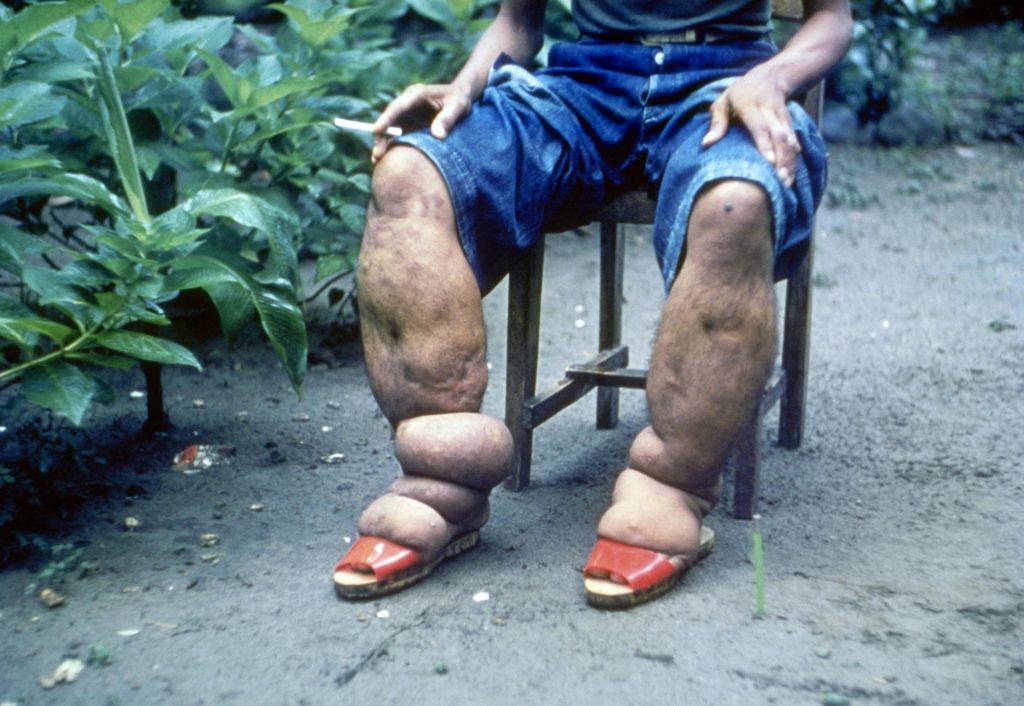
Filarial worms are tiny, string-like parasitic worms that can infect humans. They cause several diseases in humans, but there are three main types of worms that cause Elephantiatis: Wuchereria bancrofti, Brugia malayi and Brugia timori. Prevalent in third world countries and tropical areas, at least 150 million people are host to this parasite.
Filarial worms begins its lifecycle when a mosquito sucks blood and parasite eggs from an infected human. The eggs then hatch into larvae inside the mosquito’s gut, and move to the mosquito’s proboscis. When the mosquito finds her next victim, the larvae depart to human skin, where it migrates to the lymphatic system. They mature into adult worms, and mate, while continuously laying eggs in the human’s bloodstream, waiting for the next mosquito to take a meal.
When adult worms die, they build up in the lymphatic system ducts as they are unable to move out of there. Over the years, dead worms pile and clog up the ducts, causing draining of fluids in the body to become impossible. This causes the blocked parts of the body to swell due to fluid accumulation, mostly affecting the legs and genital areas. The affected parts eventually becomes damaged and thickened, making walking extremely painful. Some women who suffer from the disease also experience swelling of their breasts.
Unfortunately, enlargement of body parts is permanent and irreversible, and the disease have to be managed long term after the worms have been killed.
4. Trichina worms

Trichina worms are roundworms that live in the muscle tissue of animals. Their natural hosts are animals like pigs and bears, and can be passed on to humans if humans eat undercooked pork or wild game. Animals like horses and cows can also become hosts to these parasites if they accidently eat meat of infected animals.
For human infections, the life cycle of the Trichina worm begins in the stomach of a human when he or she eats a piece of undercooked pork or wild game. The acid in the human’s stomach dissolve the sac encapsulating the larvae, freeing them and signaling them to feed. The worms grow into adults and mate in the small intestines. Baby worms then burrow from the intestines into the muscle tissue like arms and legs, where they eat and grow, and eventually form cysts, waiting for the host to be eaten. However, since no animal feeds on humans, the larvae becomes trapped in its own cyst, which hardens and eventually dies, unable to mature fully into an adult worm.
Some people develop stomachaches and fevers when they first get the parasite. Others don’t get any symptoms at all, especially if the number of worms is very small. When the larvae moves to the muscles, additional signs like muscle ache, headaches and conjunctivitis can occur. This condition is known as trichinosis.
The main danger of this parasite happens when the larvae unwitting ends up in vital organs like the heart and brain. When that happens, the immune system tries to kill the worms, but also end up harming the organs. Inflammation of these important organs can cause conditions like meningitis and myocarditis, both of which are life threatening conditions.
The best way to not get trichinosis is to ensure meat is cooked thoroughly before eating by using a meat thermometer.
3. Screwworm fly

Screwworm flies are insects that are about double the size of a regular housefly. There are basically two types of screwworm flies: Old World flies and New World flies. Although both these insects look and behave very similarly, the New World fly is considered to be more dangerous than the Old World fly. Old World flies mainly exist in the Eastern part of the globe, while New World flies lives in the western hemisphere.
After mating, the female screwworm fly searches for a living mammal victim with an open wound or sore to lay her eggs in. This victim can be animals like deers, boars or even humans. The eggs hatch into larvae, which eat their way deeper into the victim’s wound, gorging themselves on the victim’s flesh. The larvae have sharp barbs that dislodge in the victim’s flesh, making them hard to get rid of. It takes about a week for the larvae to mature into adult flies. Grown-up flies drop to the ground to form pupa in the soil.
The condition of being eaten alive by screwworm flies larvae is called myiasis. They feed on living flesh, causing agonizing pain for the victim. The wound can also become infected with external microorganisms such as bacteria. There is also no medicine to kill these larvae all at once when infested, and the worms have to be pulled out 1 by 1 from the victim’s body.
The best way to avoid becoming a living meal for this parasite is to wear long sleeve clothes and cover up open wounds when going outdoors.
2. Plasmodium
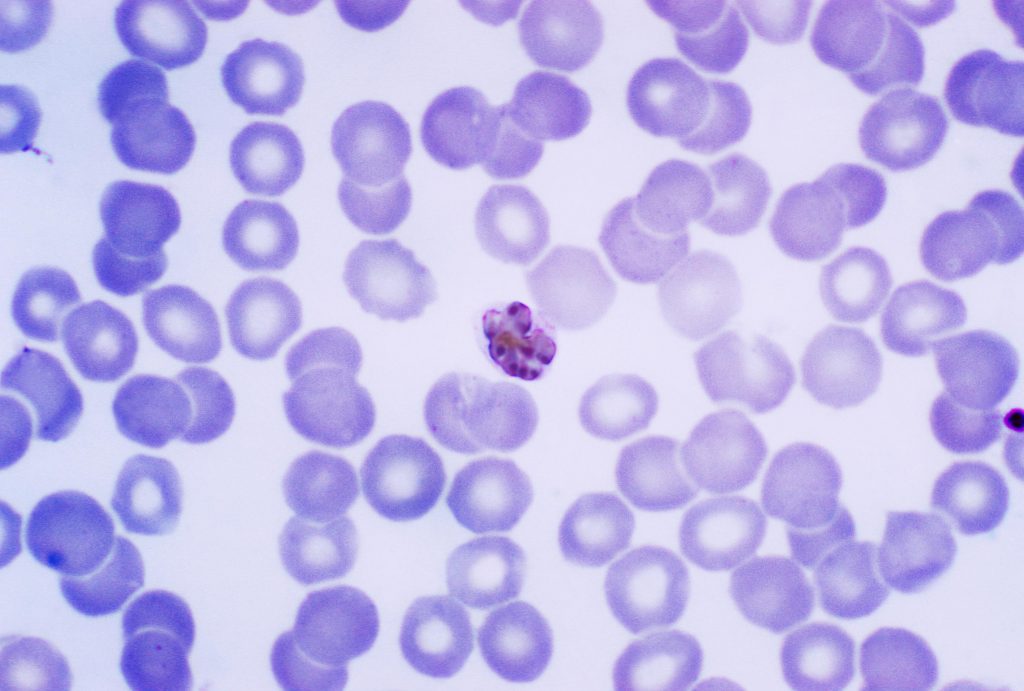
Plasmodium is a single cell protozoan that is carried by adult female Anopheles mosquitos into its potential human host. This parasite is dangerous because it can multiply quickly without having to mate, and can cause massive damage in their host’s body if not quickly eradicated.
When an adult female Anopheles mosquito suck blood from a human, the parasitic protozoan is injected into the host’s bloodstream. They then swim to the liver, where they rapidly divide and grow in numbers for the next seven days. The parasite then leaves the liver, invading and multiplying in red blood cells until the cell bursts. Some Plasmodium then morph into a sexual form known as gametocytes. Gametocytes then leave the human body when it is picked up by an adult female mosquito. They then multiply in the mosquito and travel to the proboscis of the insect. When the mosquito takes a blood meal from another human, the parasite spreads.
When red blood cells burst due to the parasites, white blood cells attempt to hunt down the intruders. The body heats up and causes fever, but these crafty parasites hide in RBCs, making it extremely difficult to destroy them. The spleen, responsible for cleaning up dead blood cells, enlarges due to overworking to clear all the cells destroyed by the parasite. This condition is infamously known as malaria, one of the diseases that infects a huge population of humans in tropical third world countries. In more serious cases, it can cause seizures, coma and death.
The best way to avoid contracting malaria is to wear long sleeve clothes and use insect repellent when going to or living in tropical countries.
1. Brain eating amoeba
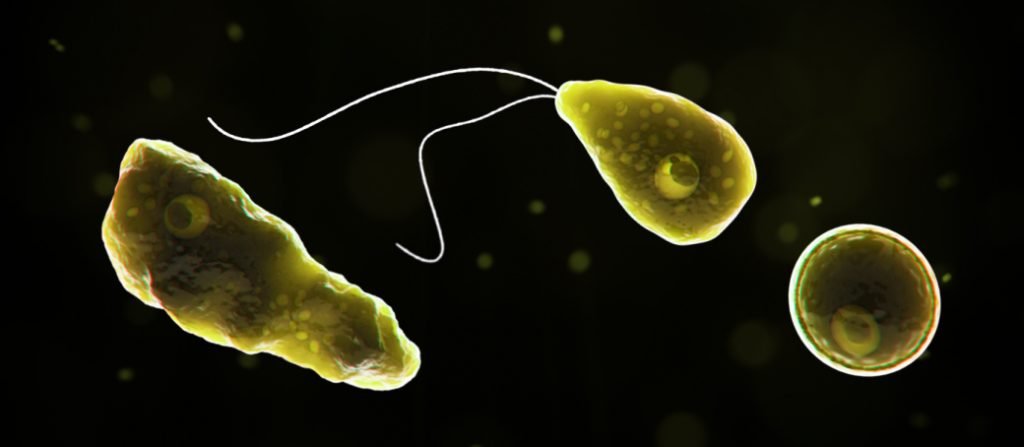
The brain eating amoeba, also known as Naegleria fowleri as its Latin name, is a single cell protozoan that usually lives at the bottom of rivers and lakes. These tiny organisms are roughly 8mm in size, smaller than the human eye can see. They usually feed on bacteria residing among them in their environment, and do not actively attack humans.
However, when a human goes swimming in an infested river or lake, the amoeba can enter the human body through the nostrils. From there, the amoeba travels through the olfactory nerve (the nerve which controls the sense of smell) to the front part of the brain. Once inside the brain, the amoeba goes into a feeding frenzy from brain tissue.
As the brain is under attack, the immune system rapidly responds, attempting to destroy the amoeba. The brain swells, causing meningitis and fever. However, this does not stop the amoeba from multiplying rapidly, eating more and more of the brain, eventually causing coma and death. This condition is known as Naegleriasis.
There is no known cure for the brain eating amoeba, and almost all cases are fatal. Those who survived the disease have to live with severe brain damage.
The only way to avoid getting this parasite into your brain is to wear a nose-cap when swimming.
Bonus: Paralysis tick (Australia only)
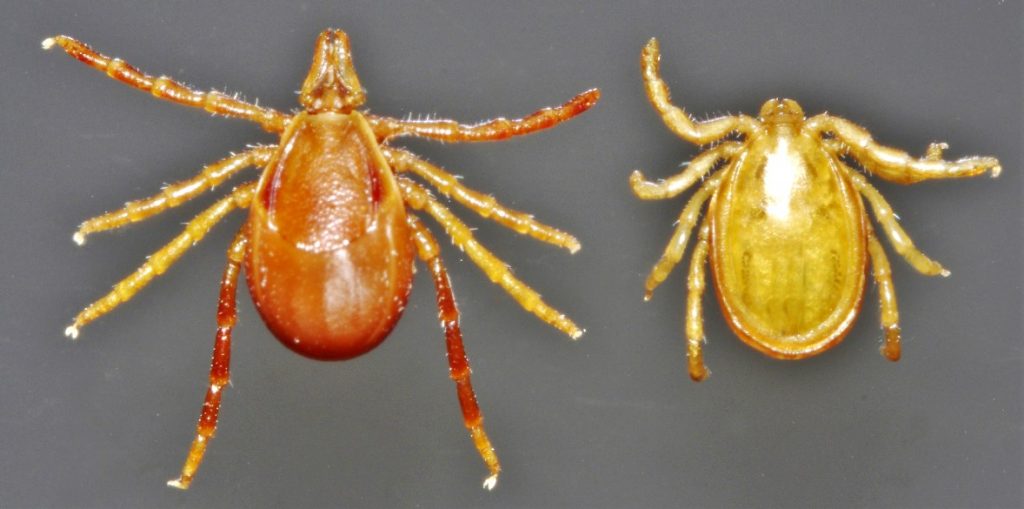
The paralysis tick, or Ixodes holocyclus, is a bloodsucking tick exclusive to Australia. These critters look for a host to feed on to successfully mature into an adult. Each time it feed, it molts, up to two times. Female ticks need to feed for three times, the last time to get enough nutrients to lay her eggs.
When the tick have found a suitable prey, they spend a couple of hours moving around their prey’s body, searching for the best spot to drink blood in. After finding one and settling down, usually at the back of the victim’s head where they cannot be detected, the tick injects toxin into the victim’s skin and drink their blood.
The toxin affects the victim’s nervous system, causing a numb or tingling sensation. It usually start at the legs, causing the victim to walk in a drunken manner. If the tick is allowed to continue releasing its poison, the paralysis can spread to the victims’ arms. If the toxin reach the lungs of the victim, it can cause death from inability to breathe.
Once the tick is removed from the victim’s body, the paralysis goes away. But removal is a delicate operation, as the stinger of the tick could become stuck in the victim’s body and continue to release poison. When attempting to remove this tick, it is best to seek professional help.
Do you have any encounter with these parasites? Leave your comments below!

